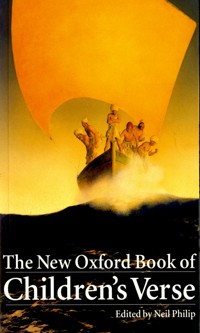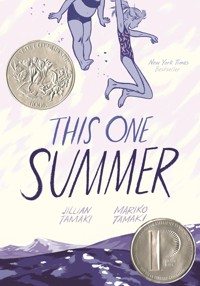Seven Books to Read as a Family
As soon as my kids were born, I began reading to them. They’d gurgle up at me, chewing their adorable fingers, as I chanted the words to The Real Mother Goose or When We Were Very Young. I’d loved books as a child, and I couldn’t wait to share my favorites with my new little family.
Once they could read, however, my boys made clear to me that we didn’t enjoy the same stories. Neither of them had much interest in the fairy tales I loved, and I couldn’t stand most of what they checked out of the library—I struggled to follow their graphic novels and cringed at dense World War I nonfiction, full of descriptions of gory battles and trench foot.
Even so, I was grateful for the time we spent with our books, and loved what it did for us as a family. Sharing what we were reading could give us a common language and a cast of characters we all knew. But how was I to find writing that might entertain everyone? That was the wrong question, I realized. Any given selection was unlikely to thrill the entire group, but a book can do more than entertain—it can also provoke, challenge, educate, or soothe.
What I list here, then, is an assortment of titles that may speak to a wide array of ages and tastes. Will everyone in your family enjoy these the same way? Honestly, that seems unlikely. But each will offer something significant to a variety of readers, in any stage of life.

Toys Go Out, by Emily Jenkins
I associate reading together with snuggling at bedtime, when you choose a book that’s comforting enough to bring everyone sweet dreams. And when I consider that experience, Toys Go Out comes immediately to mind. On the surface, it’s a simple story that follows a collection of sentient toys named Stingray (a stingray), Lumphy (a buffalo), and Plastic (we’re not quite sure what Plastic is; that’s a mystery), and the episodic adventures they share in their bedroom. Periodically, they venture beyond its threshold—one excursion involves a human-mandated visit to Frank, the “bumpity washing machine,” who isn’t nearly as scary as Lumphy fears—and every chapter stirs up curiosity and joy. Toys Go Out is gentle enough for a toddler but clever enough to snare a slightly older kid pretending not to listen. And it’s so quietly philosophical about relationships, communication, and the idea of home that I often went to bed still pondering what I’d just read.

The New Oxford Book of Children’s Verse, edited by Neil Philip
The gift I most frequently send to any new parent is a thick anthology of poems, such as The New Oxford Book of Children’s Verse. People are sometimes surprised when they unwrap it, but I never worry, as most kids have an innate love of meter and rhyme; they’re delighted by the daily poetry of cheers and preschool chants. A volume like this one, packed with a wide range of styles and voices, offers something for everyone. Take turns dipping in, and each family member can find poems they’ll relish, whether they respond more to the playfulness of Lewis Carroll or the thoughtful reflections of Langston Hughes. And because poetry has a habit of sticking in the brain, the most satisfying payoff may come years or even decades later: Recently, my now-teenage son posted a few lines of W. B. Yeats on Instagram, and although he may not recall where he first heard the poem, I have fond memories of reading it to him from a big collection just like this one.
[Read: Why kids aren’t falling in love with reading]

The Cartoon History of the Universe, Volumes 1–7, by Larry Gonick
The Cartoon History of the Universe has probably affected our household more than any other series, though I’m not even sure where our copies came from. The cover promises everything from “the Big Bang to Alexander the Great,” and the first installment is the right place to start. It has a pleasingly wacky premise: A Harvard mathematician loses his temper and quits to build a time machine in his library, powered by the smell of musty books. Life evolves quickly in his cartoon land, and fairly soon humans get straight to work developing cities, armies, and deities. From there, Gonick’s panels run slapdash through geography, art, economics, and faith, combining ridiculous onomatopoeias like “Crakarumblebwooom!” with silly puns, physical humor, and social critique. Each chapter is devoted to a single topic, and they’re organized in a loosely chronological fashion, so you can flip to whatever subjects your family is most likely to enjoy. Part of what made Cartoon History so special to us was that my kids read them first, then found themselves experts in all sorts of subjects I knew nothing about. I’d marvel at their sudden knowledge of Pythagoras or the gigantic mammals of the Eocene epoch—and steal the books as soon as they were finished.

Journey, by Aaron Becker
A certain kind of book is well suited to life in the back seat of a car. It has pictures, can be read out of order or paused abruptly when you arrive somewhere, and stands up to repetition. It’s typically purchased for children but can also entertain grown-ups in traffic jams. And Journey is the ultimate car book: It’s the wordless expedition of a bored girl who takes a magical red crayon and, like Harold, draws a universe of her own devising. She escapes into a land of glowing lanterns, primeval forests, hot-air balloons, castles, and flying carpets. It’s a wild, breathless adventure; the visual complexity, which can make you feel like you’re staring at architectural drawings, is dizzying. Readers may spend long stretches simply gazing at a single spread, searching for anything they may have missed the last time. Journey leaves so much to the imagination that, in essence, everyone becomes a storyteller the minute they open it.
[Read: What rereading childhood books teaches adults about themselves]

This One Summer, by Mariko and Jillian Tamaki
This One Summer is one of the rare books perfect for middle schoolers, who are often caught in the gap between childhood stories and more self-reflective teen narratives. The Tamakis’ graphic novel follows adolescent Rose as she spends one important season at a lake house her family visits annually. This year, things feel different. Rose’s parents are fighting; meanwhile, she becomes privy to the activities of older teens in the area, who face complex challenges like pregnancy and mental illness. As readers look on, Rose struggles to understand the rapidly changing universe around her, and eventually finds a way to accept her place in it. The plot is so much like real life, it’s almost painful—but it’s a deeply honest depiction of adolescence, and it might help provide families with a basis for difficult-to-navigate conversations. Kids absorb and puzzle over so much about the adult world, and This One Summer acknowledges that brilliantly.

Brown Girl Dreaming, by Jacqueline Woodson
“Somewhere in my brain / each laugh, tear and lullaby / becomes memory,” Woodson tells us, in “how to listen #1,” an early selection from her memoir-in-poems. Brown Girl Dreaming is full of these kinds of memories—instants tied together carefully so that we feel as though we know the speaker intimately. The book uses Woodson’s deeply personal recollections, and her family lore, to examine the crossroads of America’s recent past: Her story begins in Ohio in 1963, but it moves in and out of time and space, exploring her moves to segregated South Carolina and bustling New York City as well as the histories and political landscapes of these places. The musical, precise verse moves quickly from moment to moment, and is especially tender in portraying the inner life of young Jackie. The way the distinct, quotidian details of Woodson’s biography are woven into the decades reminds the reader that each day, we are all living through history.
[Read: How to show kids the joy of reading]

Collected Poems, by Allen Ginsberg
“America I’ve given you all and now I’m nothing,” Ginsberg writes at the beginning of his celebrated poem “America,” which I first read when I was 14 years old. It baffled me. Did I like it? I wasn’t sure. But it drove me to the encyclopedia, where I’d look up the terms I’d never heard before. (What were “Wobblies”? Who was Vanzetti?) Even though I didn’t understand everything, I was captivated by the relentless force of Ginsberg’s language, his conviction and rage. His work sounded a lot like how I felt at that age—messy, self-righteous, confused. Encountering “America” now, I feel the same way I did 35 years ago. While a family may need a bedtime book for drifting off, they may also need one for waking up, and Ginsberg, the eternal writer of friction, is the perfect poet to struggle with. In these complicated times, he seems like the right poet for the young and the old to share, whether you discuss the challenges in “Howl”’s cry for the marginalized or the personal grief of “Kaddish.” All these years after I first read them, these poems still shock me, and they may well send new readers off to see what else poetry can do.
